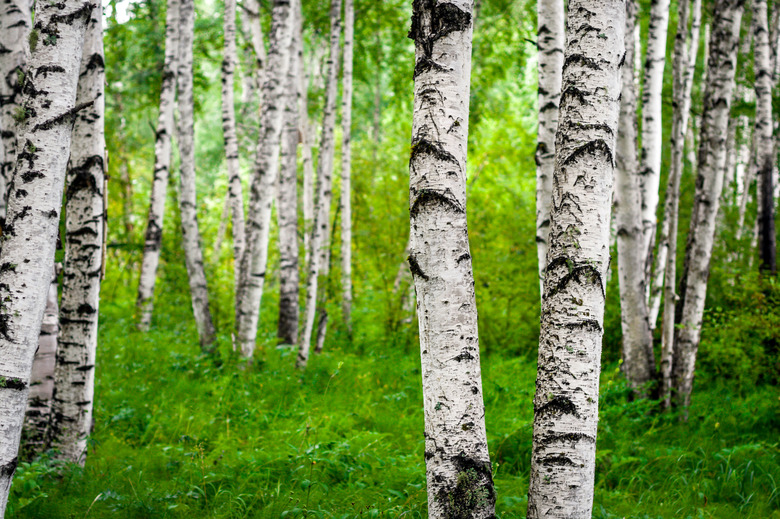The Pros And Cons Of Birch Wood
The birch tree includes nine different species such as yellow, white and sweet birch, but most birch products used domestically are referred to as simply birch hardwood or birch plywood. Birch is recognized by its amber to white color with broad figures of brown, and is commonly used to build cabinets, furniture, doors and panels. Birch has many advantages compared to other cabinetry and furniture woods. Its downsides are few, but stain application and variations in plywood can make a difference in its use and appearance.
Thickness Differences
Birch is a major source of veneer, which is a thin layer of wood used to overlay other products such as plywood, particleboard or fiberboard. Plywood made from birch veneer is one of the most widely used of all the hardwood plywood products. Economy or shop-grade birch plywood is one of the lowest-priced in lumberyards and home improvement stores, typically saving up to 75 percent for a set of cabinets made from maple or cherry. But shop-grade birch has only a thin layer of veneer — typically less than 1/16-inch — and can be delicate to work with. Baltic birch plywood is at the other end of the scale, with a much thicker layer of veneer. Imported from Europe, Baltic birch is more expensive, and one of the most durable plywood products on the market.
Quantity Over Quality
Since birch is readily available across the country where wood products are sold, woodworkers and cabinetmakers familiar with its characteristics rely on readily available quantities for quality color matching. But when plywood stocks sit for extended periods, inspect your choices carefully before purchase to avoid sheets with water spots, dirt or scratches. Because of the low cost of birch plywood, many cabinets are built with birch plywood, whereas solid birch hardwood is dense, harder to find than plywood and can rival the cost of similar hardwoods. Experienced cabinetmakers often substitute alder, a softer and more affordable cousin of birch, for face-frame material on cabinets.
Finishing Pros and Cons
Often compared to maple, the texture of birch hardwood is coarser and does not result in a finish with the smooth feel and glassy appearance of maple. Its color is lighter and stain application may yield mixed results. Darker stains do not absorb into birch at an even rate and blotching can occur. Additional sanding with 120-grit sandpaper is usually needed to prevent stain from blotching on birch hardwood. When sanded or cut, birch exhibits a mild sensitizing effect that often requires the use of dust masks. When finished without stain, birch exhibits a natural golden color considered warm and pleasant. Some cabinetmakers think that birch, with its easily recognized brown bands and figures, dates cabinets that were all the rage during the late 1960s and early '70s.
Perishable Versus Resilient
Oppositions to birch are relatively few, but it is considered a perishable wood product that rots and decays when exposed to weather. The wood is also susceptible to infestation by bugs. Woodworking machinery cuts birch with ease, but because of interlocked patterns — grain that turns at 90-degrees — it has a moderate blunting effect on blades. Screw, glue and nail holding characteristics are good with birch, but due to its hardness, pre-drilling is sometimes necessary for smaller nails or screws. In defense of its character, birch is known to have a natural resiliency, and doesn't splinter or shatter as readily as other hardwoods such as oak or ash when it encounters high-speed blades or knives.
